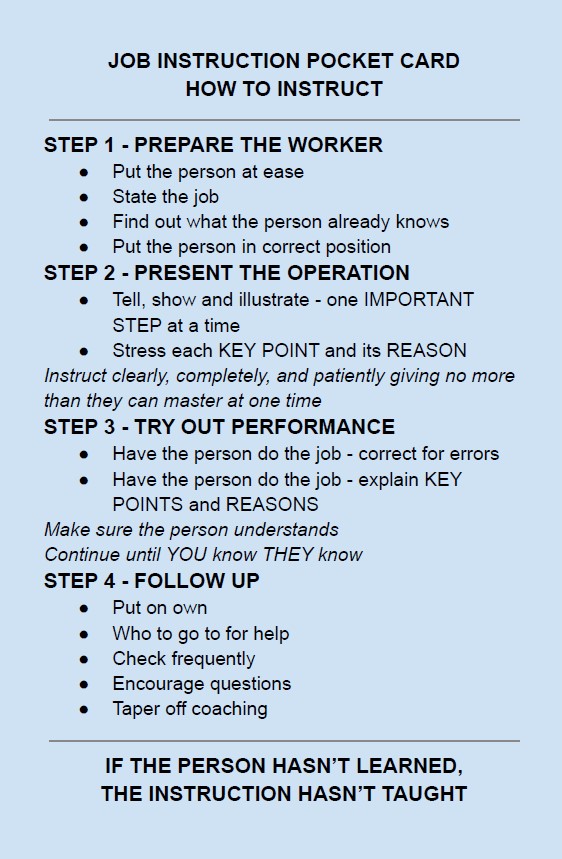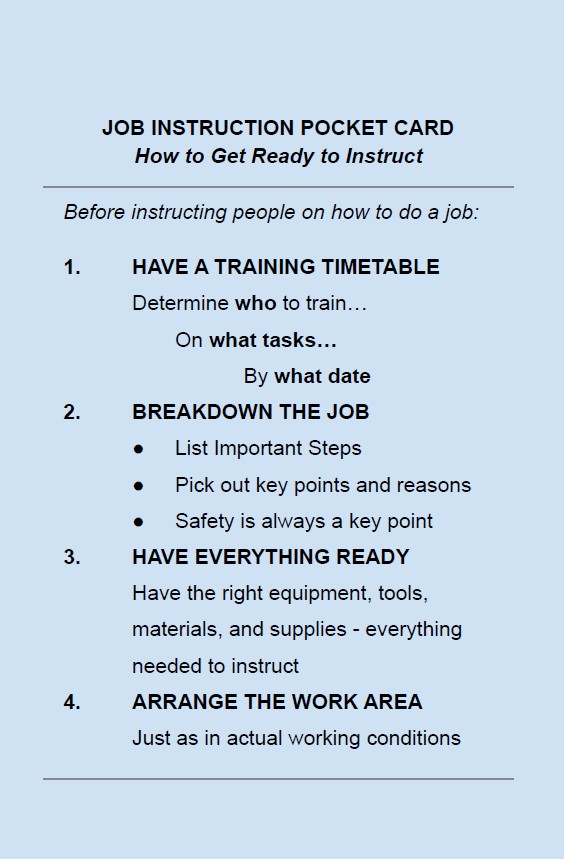
| Downloads |
|---|
| TWI Job Instruction Overview Flyer |
Implementing TWI Job Instruction (JI) involves:
Ineffective training can lead to reduced productivity, inconsistencies in work quality, and increased risks. Proper instruction is paramount, not only for efficiency but also for maintaining standards and ensuring safety.
At TMEP, we champion the Training Within Industry Job Instruction (TWI JI) method because of its focus on clarity, consistency, and hands-on learning. By breaking down tasks and teaching them systematically, JI ensures that every team member is equipped to perform their role to the highest standard.
Based on a standard four step method depicted in the cards below, TWI JI transforms your training program into a system that eliminates information overload and instills practical skill-building, setting the stage for continued excellence. JI trains your team members to breakdown a given job and develop the “one best way” to do it, then in turn, train others to perform that job the “one best way” – consistently and repeatably.


Training Within Industry (TWI) is a series of training programs developed during WWII that enabled U.S. companies to hire and train huge numbers of new workers to replace those who had gone to war. Traditionally, TWI has three main training programs, collectively referred to as “J” programs:
Job Instruction (JI) taught supervisors and experienced workers how to teach people to do work with reduced defects, less scrap and rework, fewer accidents and less tool and equipment damage.
Job Methods (JM) taught workers to make improvements methodically by making the best use of people, machines, and materials to produce greater quantities of quality products in less time.
Job Relations (JR) taught supervisors how to handle people problems effectively and fairly by gathering facts, weighing them, making a decision, taking action, and checking results.
Contact us for more information about JM and JR.
